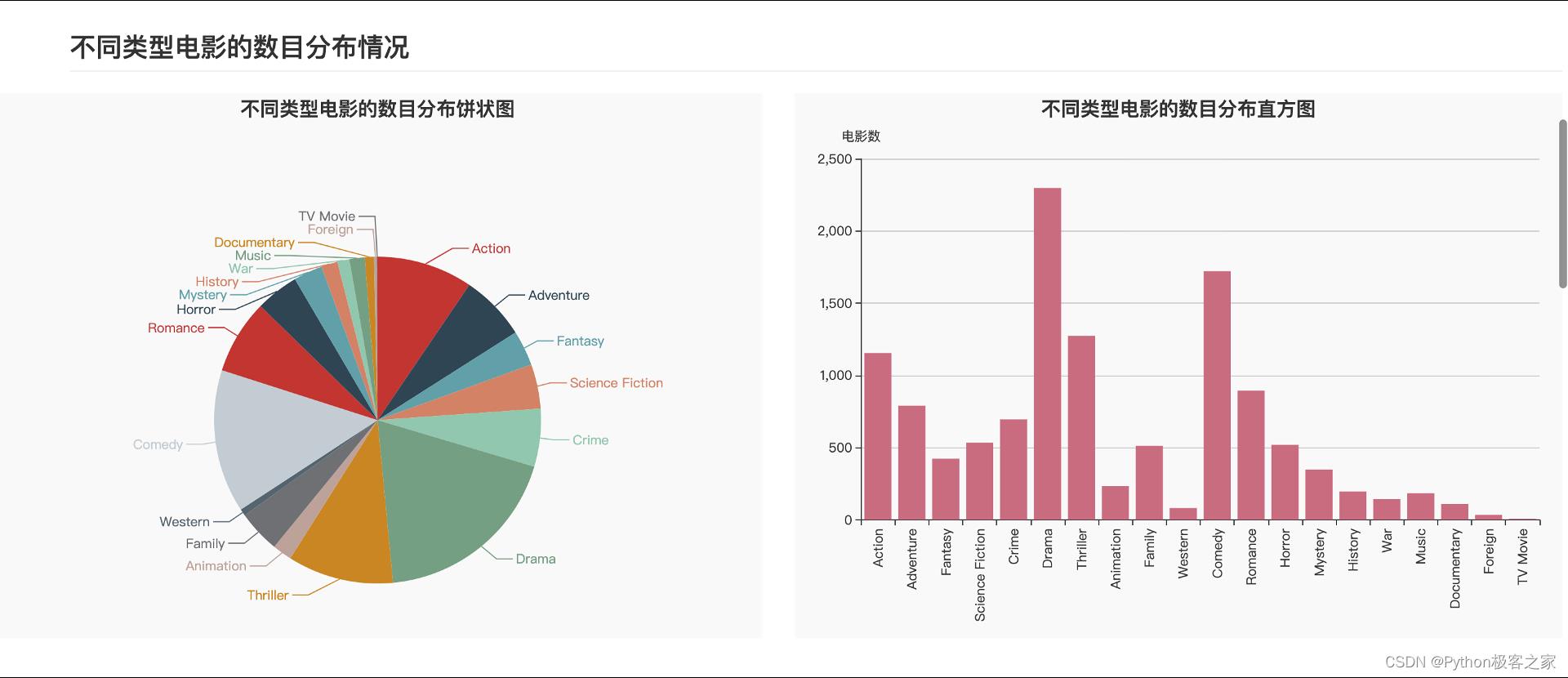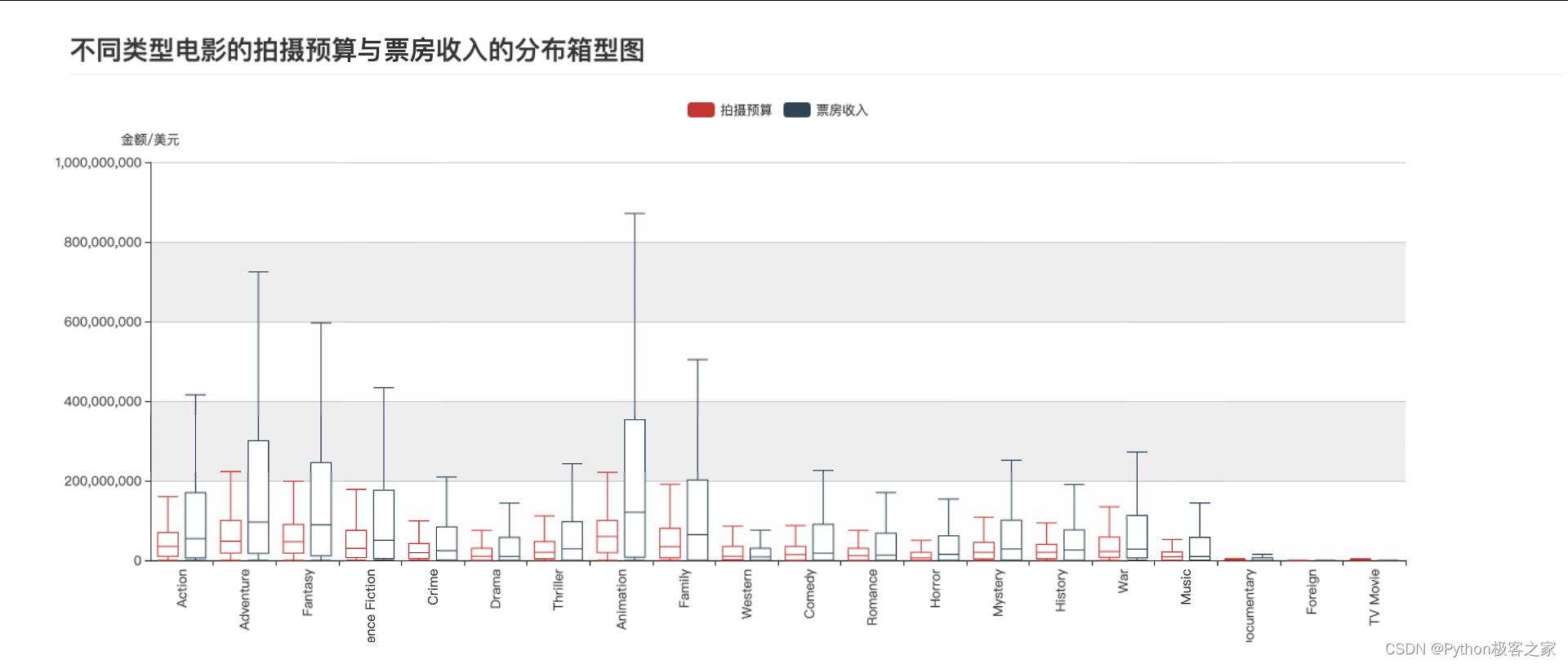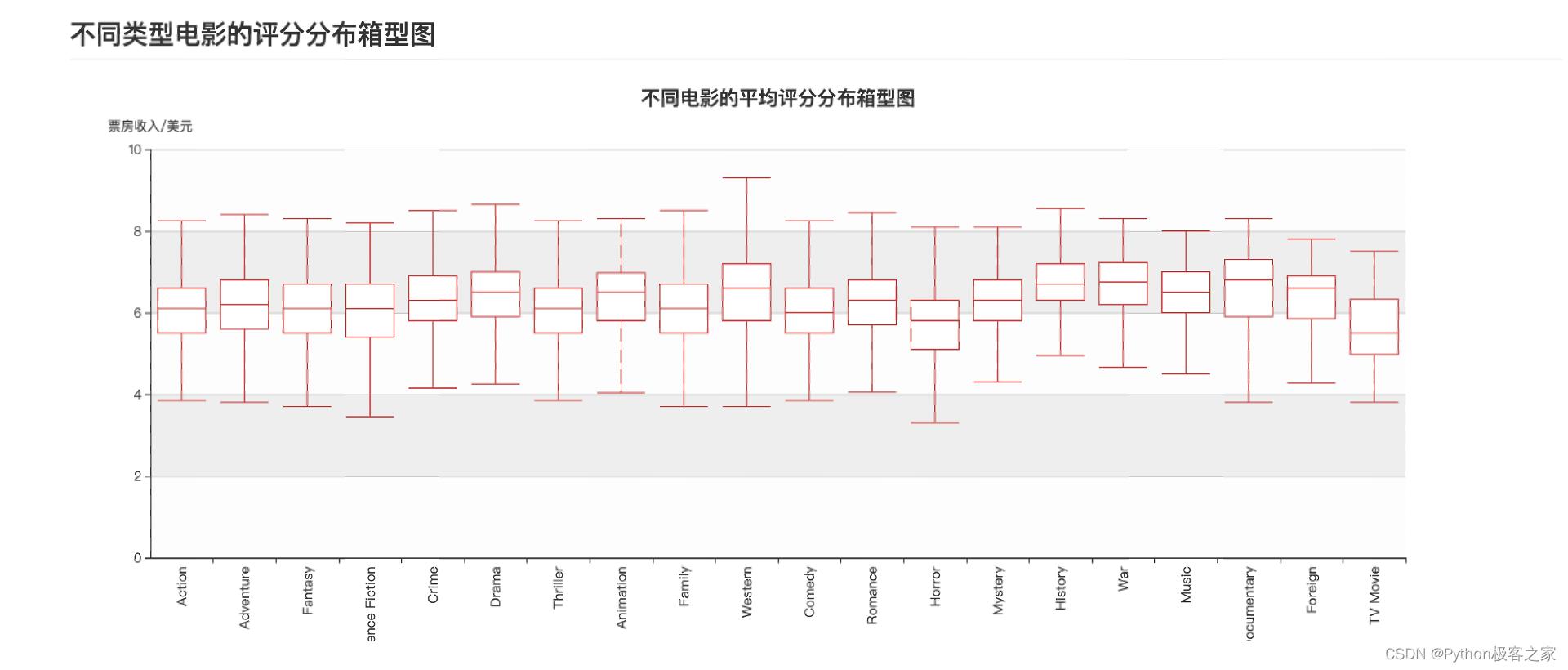基于python的电影数据可视化分析与推荐系统
Posted Python极客之家
tags:
篇首语:本文由小常识网(cha138.com)小编为大家整理,主要介绍了基于python的电影数据可视化分析与推荐系统相关的知识,希望对你有一定的参考价值。
温馨提示:文末有 CSDN 平台官方提供的博主 Wechat / QQ 名片 :)
1. 项目简介
本项目利用网络爬虫技术从国外某电影网站和国内某电影评论网站采集电影数据,并对电影数据进行可视化分析,实现电影的检索、热门电影排行和电影的分类推荐,同时对电影的评论进行关键词抽取和情感分析。
2. 功能组成
基于python的电影数据可视化分析系统的功能组成如下图所示:
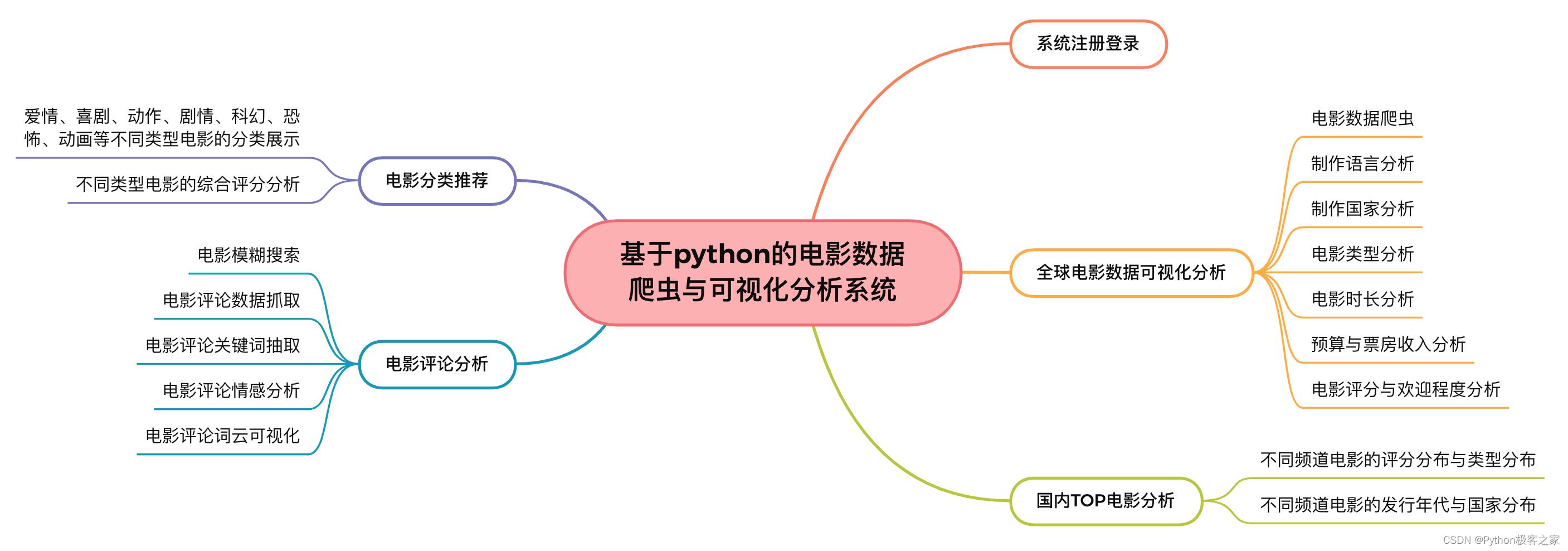
3. 基于python的电影数据可视化分析与推荐系统
3.1 系统注册登录
系统的其他页面的访问需要注册登录,否则访问受限,其首页注册登录页面如下:

3.2 全球电影数据爬虫
互联网电影资料库,隶属于xxx公司旗下网站,是一个关于电影演员、电影、电视节目、电视明星和电影制作的在线数据库,包括了影片的众多信息、演员、片长、内容介绍、分级、评论等。
def get_movie_detail(url):
"""获取电影发行的详细信息"""
response = requests.get(url, headers=headers)
response.encoding = 'utf8'
soup = BeautifulSoup(response.text, 'lxml')
intro_text = soup.find('span', class_='a-size-medium').text.strip()
summary = soup.find('div', class_='mojo-summary-values')
items = summary.find_all('div', class_='a-section a-spacing-none')
movie_detail =
for item in items:
spans = item.find_all('span')
key = spans[0].text.strip()
if key == 'Domestic Distributor': # 经销商
movie_detail['Domestic_Distributor'] = spans[1].text.strip().split('See')[0]
elif key == 'Domestic Opening': # 国内开放
opening = item.find('span', class_='money').text.strip()
movie_detail['Domestic_Opening'] = float(opening.replace(',', '')[1:])
elif key == 'Budget': # 电影发行时候的预算
budget = item.find('span', class_='money').text.strip()
movie_detail['Budget'] = float(budget.replace(',', '')[1:])
elif key == 'Earliest Release Date': # 首次发行时间
movie_detail['Earliest_Release_Date'] = spans[1].text.strip().split('(')[0].strip()
elif key == 'MPAA':
movie_detail['MPAA'] = spans[1].text.strip()
elif key == 'Running Time': # 电影时长
run_time = spans[1].text.strip()
run_time = int(run_time.split('hr')[0].strip()) * 60 + int(run_time.split('hr')[1].strip()[:-3])
movie_detail['Running_Time'] = run_time
elif key == 'Genres': # 电影题材
genres = spans[1].text.strip()
movie_detail['Genres'] = genres.split()
else:
continue
mojo_gutter = soup.find('div', class_='a-section mojo-h-scroll')
# 发行地域数
areas = mojo_gutter.select('table')
movie_detail['Relase_Areas'] = len(areas)
# 发行的版本数
release_trs = mojo_gutter.select('tr')
movie_detail['Relase_Count'] = len(release_trs) - len(areas)
return movie_detail
3.3 全球电影数据可视化分析
-
电影出品的年份和制作语言分布情况

-
不同制作国家或地区的电影数目分布情况

-
不同类型电影的数目分布情况
-
不同类型电影的时长分布箱型图
-
不同类型电影的拍摄预算与票房收入的分布箱型图
-
不同类型电影的评分分布箱型图
-
不同电影风格的受欢迎程度分布箱型图

-
电影评分对票房的影响

3.4 国内电影网站的 TOP 电影分析
实时抓取国内某电影评论网站不同分类下的TOP电影排名数据:
def top20_movie_analysis(cate):
""" Top20 电影 """
url = 'https://movie.xxxx.com/j/search_subjects?type=movie&tag=&sort=recommend&page_limit=20&page_start=0'.format(
cate)
print(url)
headers['Cookie'] = 'your cookie'
headers['Host'] = 'movie.xxxx.com'
headers['Referer'] = 'https://movie.xxxx.com/explore'
response = requests.get(url, headers=headers)
response.encoding = 'utf8'
resp = response.json()['subjects']
movies = []
for movie in resp:
movie_url = movie['url']
movie_info =
'电影名称': movie['title'],
'评分': movie['rate'],
print(movie_url)
# 获取影片的简介信息
resp = requests.get(movie_url, headers=headers)
resp.encoding = 'utf8'
soup = BeautifulSoup(resp.text, 'lxml')
summary = soup.find('span', attrs='property': 'v:summary')
# 年份
year = soup.find('span', attrs='class': 'year').text[1:-1]
movie_info['年代'] = year
info = soup.find('div', attrs='id': 'info')
for d in info.text.split('\\n'):
if '语言' in d:
movie_info['语言'] = d.split(':')[1].strip()
if '类型' in d:
movie_info['类型'] = d.split(':')[1].strip().split('/')
if '制片国家/地区' in d:
movie_info['制片国家/地区'] = d.split(':')[1].strip()
if '语言' not in movie_info:
movie_info['语言'] = '未知'
if '类型' not in movie_info:
movie_info['类型'] = ['未知']
if '制片国家/地区' not in movie_info:
movie_info['制片国家/地区'] = '未知'
movies.append(movie_info)
time.sleep(1)
# 按照评分排序
results =
movies = sorted(movies, key=lambda x: x['评分'], reverse=True)
results['评分排序_电影'] = [m['电影名称'] for m in movies]
results['评分排序_评分'] = [m['评分'] for m in movies]
# 按照时间排序
movies = sorted(movies, key=lambda x: x['年代'], reverse=True)
results['年代排序_电影'] = [m['电影名称'] for m in movies]
results['年代排序_年代'] = [int(m['年代']) for m in movies]
# 地区排序
diqu =
for m in movies:
for c in m['制片国家/地区'].split('/'):
c = c.strip()
if c not in diqu:
diqu[c] = 0
diqu[c] += 1
results['地区排序_地区'] = list(diqu.keys())
results['地区排序_数量'] = list(diqu.values())
# 类型排序
leixin =
for m in movies:
for l in m['类型']:
l = l.strip()
if l not in diqu:
leixin[l] = 0
leixin[l] += 1
results['类型排序_类型'] = list(leixin.keys())
results['类型排序_数量'] = list(leixin.values())
return jsonify(results)

3.5 电影分类推荐
 3.6 电影评论分析
3.6 电影评论分析
对抓取的电影评论信息进行文本预处理,包括去除空字符、重复字符和标点符号等,并进行基于 tfidf 和情感词典的情感分析:
......
count = 0
while True:
......
start = 10 * (len(comments) // 10 + 1)
comment_url = movie_url + '/reviews?start='.format(start)
response = requests.get(comment_url, headers=clean_headers)
response.encoding = 'utf8'
response = response.text
soup = BeautifulSoup(response, 'lxml')
comment_divs = soup.select('div.review-item')
count += 1
for comment_div in comment_divs:
com_time = comment_div.find('span', class_='main-meta').text
comment_ori = re.sub(r'\\s+', ' ', comment_div.find('div', class_='short-content').text.strip()).replace(
'...(展开)', '').replace('(展开)', '')
if len(comments) < 200:
# 评论情感分析
postive_score = SnowNLP(comment_ori).sentiments - random.random() / 10
# 评论日期
com_time = com_time.strip().split(' ')[0]
# 评论分词
comment = ' '.join(jieba.cut(comment_ori))
comments.add((comment, com_time, postive_score, comment_ori))
else:
break
start += 10
comments = list(comments)

4. 总结
本项目利用网络爬虫技术从国外某电影网站和国内某电影评论网站采集电影数据,并对电影数据进行可视化分析,实现电影的检索、热门电影排行和电影的分类推荐,同时对电影的评论进行关键词抽取和情感分析。
欢迎大家点赞、收藏、关注、评论啦 ,由于篇幅有限,只展示了部分核心代码。
技术交流认准下方 CSDN 官方提供的学长 Wechat / QQ 名片 :)
精彩专栏推荐订阅:

大数据技术之_24_电影推荐系统项目_04_推荐系统算法详解
第九章 推荐系统算法详解9.1 常用推荐算法分类9.1.1 基于人口统计学的推荐与用户画像9.1.2 基于内容的推荐与特征方程9.1.3 基于协同过滤的推荐
第九章 推荐系统算法详解

9.1 常用推荐算法分类
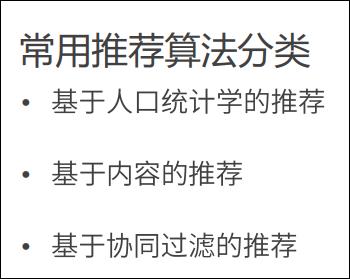
9.1.1 基于人口统计学的推荐与用户画像
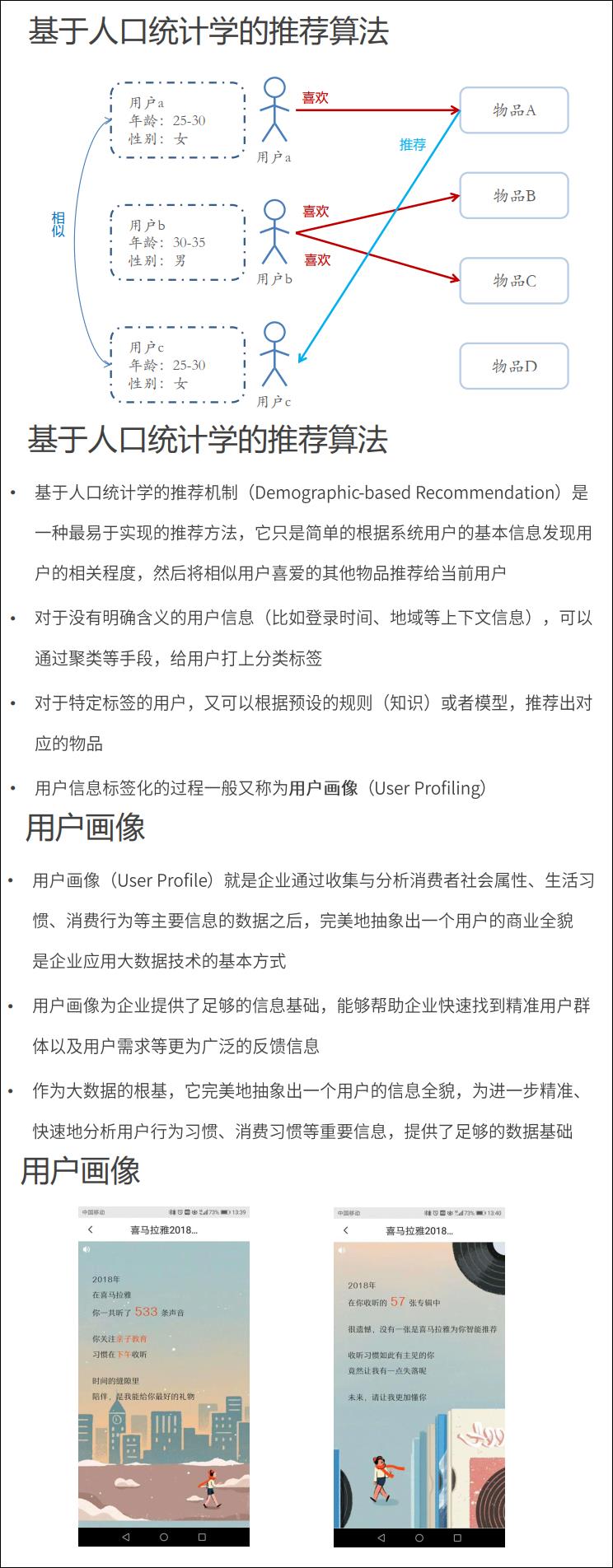
9.1.2 基于内容的推荐与特征方程

特征按照不同的数据类型分类,有不同的特征处理方法

推荐系统常见反馈数据
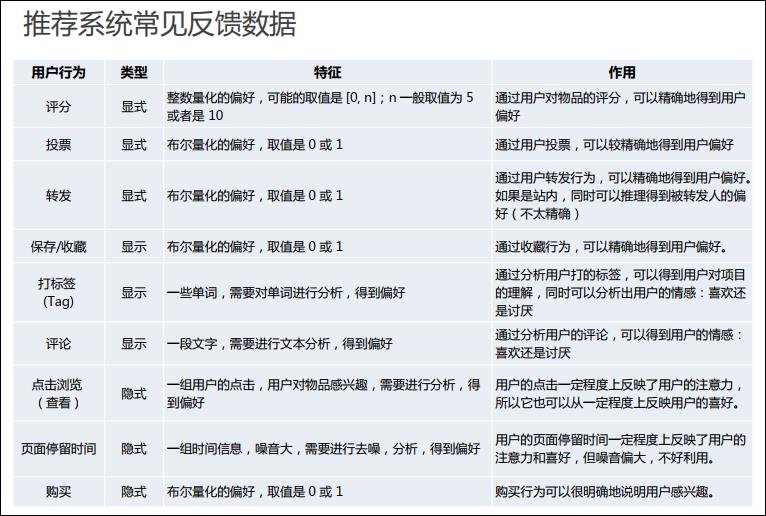
基于 UGC 的推荐

9.1.3 基于协同过滤的推荐
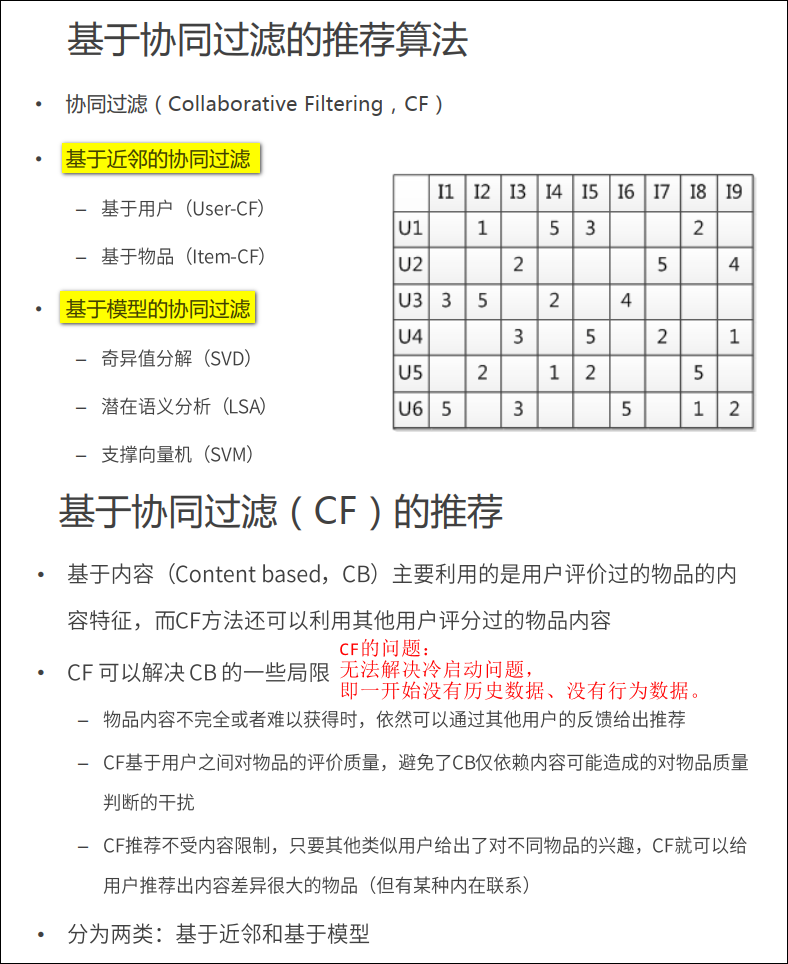
基于近邻的协同过滤的推荐

基于模型的协同过滤的推荐

模型的求解--交叉最小二乘法 + 梯度下降法

以上是关于基于python的电影数据可视化分析与推荐系统的主要内容,如果未能解决你的问题,请参考以下文章
